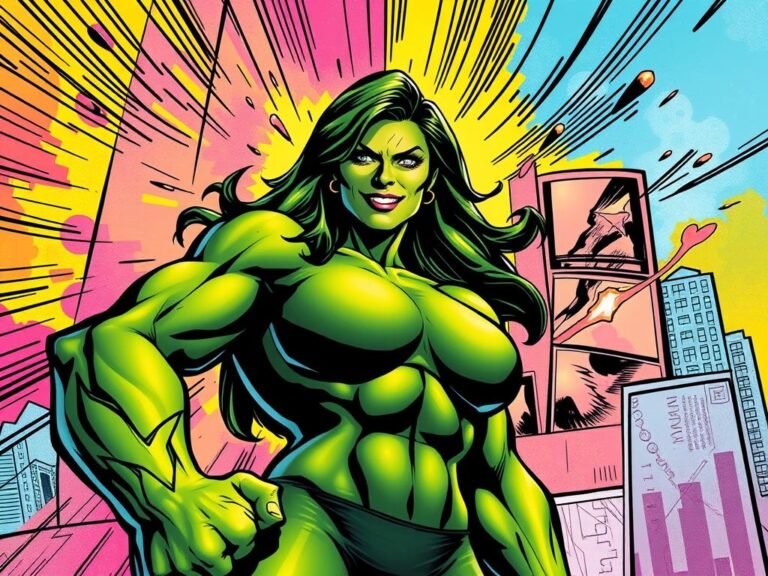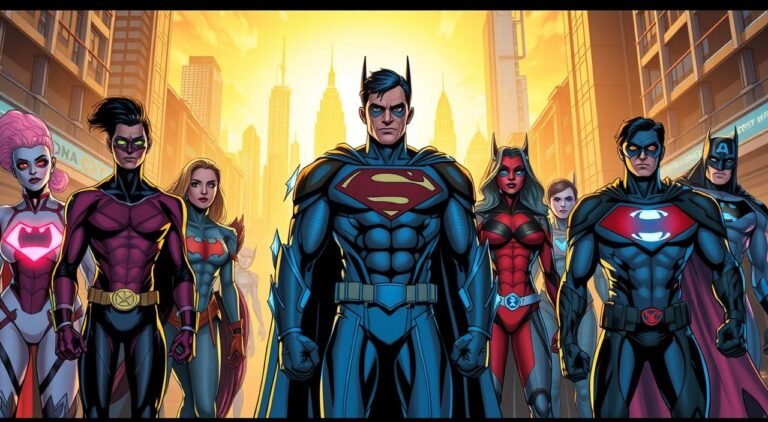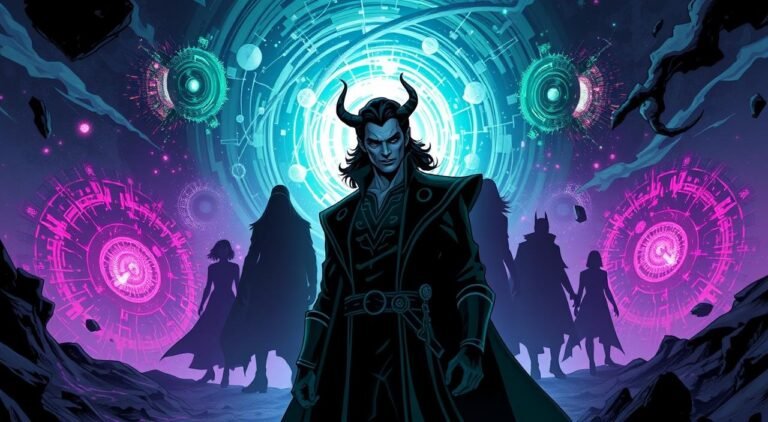Spider-Man: The Alien Costume Saga – More Than Just a Black Suit, Its Dark Origin
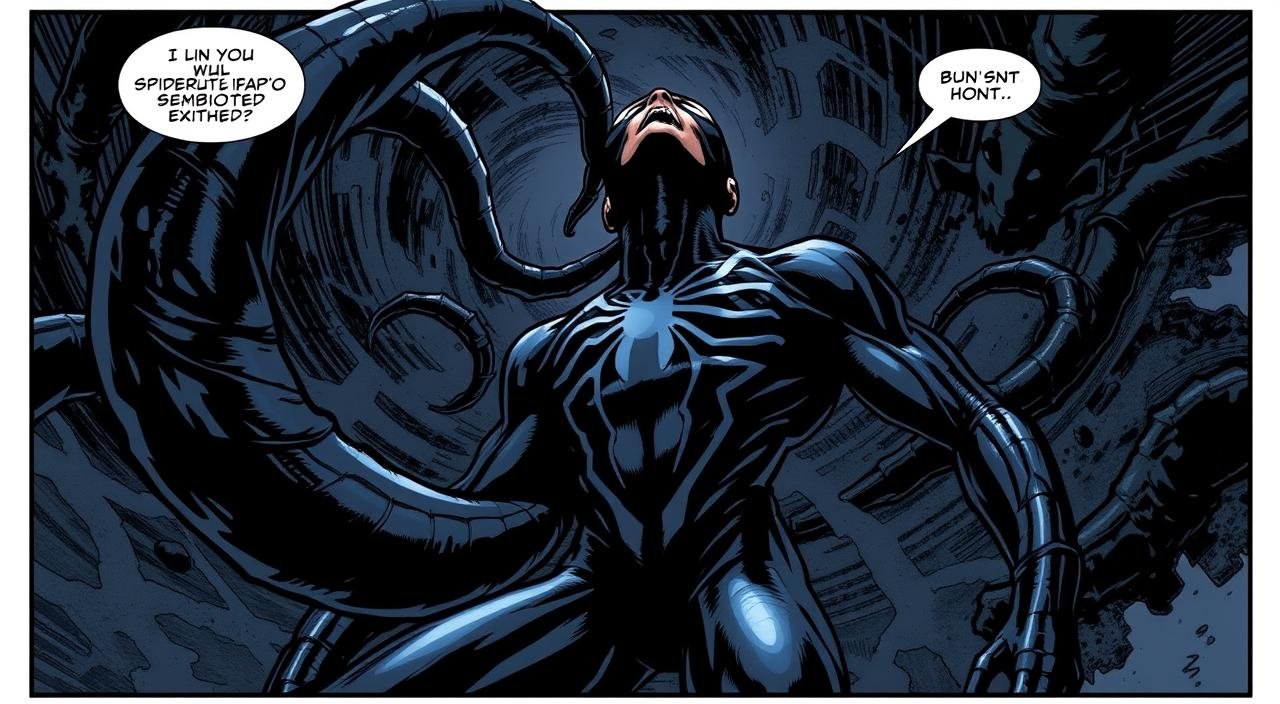
I’ll never forget the first time I saw that sleek black design in the pages of The Amazing Spider-Man. It wasn’t just a suit—it felt like a revolution.
The sharp lines, the absence of webs, that unsettling aura… this wasn’t fabric. Something primal whispered that this costume had secrets darker than its ink-like surface.
Back in 1984, during Marvel’s Secret Wars event, creators introduced what seemed like a simple wardrobe upgrade. Fans like me marveled at its fluidity and power boosts.
But as the story unfolded across issues, we realized the truth: this alien addition had a heartbeat. The genius of Tom DeFalco and Ron Frenz transformed a visual experiment into a character-defining nightmare.
Today, we’re peeling back layers of comic history to explore how a creative gamble became storytelling gold.
You’ll discover how artists reimagined Spider-Man’s iconic look, why fans initially rejected the symbiote’s sentient twist, and how this arc reshaped Marvel’s universe forever.
We’ll even touch on that legendary 1988 collected edition cover—a snapshot of a turning point in pop culture.
Join me as we untangle the web of creativity, fan reactions, and editorial risks behind this saga. By the end, you’ll see why that black suit isn’t just cloth—it’s a living, breathing chapter in superhero history.
Introduction: Setting the Stage for the Alien Costume Saga
The 1980s comics scene buzzed with bold experiments, but nothing prepared me for the ripple effect of The Amazing Spider-Man #252.
As a kid flipping through those pages, the sudden shift from red-and-blue to liquid-black design felt like watching a hero reinvent himself overnight. Little did I know this metamorphic suit would redefine storytelling in Marvel’s universe.
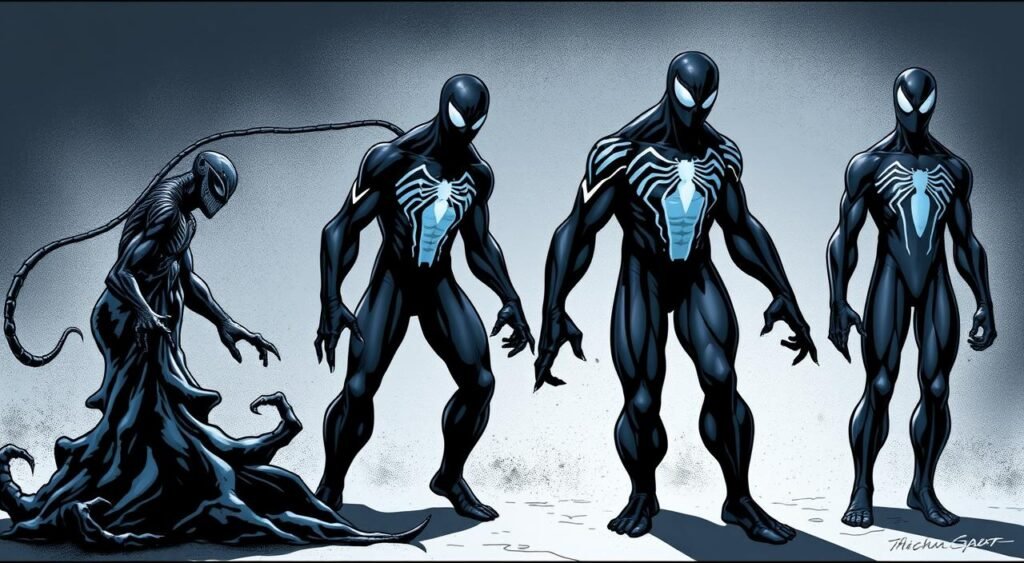
Overview of the Saga’s Historical Context
Marvel’s Secret Wars (1984) wasn’t just an event—it was a creative crucible. Editors sought fresh visuals, leading to that iconic black redesign.
At first glance, it seemed like a sleek upgrade. But fans soon noticed eerie details: self-repairing fabric, organic webbing, and a strange responsiveness to Peter Parker’s emotions.
Creators initially planned it as a simple costume change. Yet readers’ fascination with its otherworldly traits sparked a deeper narrative. Letters poured in asking, “Is this suit alive?” That curiosity became the catalyst for one of comics’ most enduring twists.
My Personal Journey with Spider-Man’s Evolution
I still have my dog-eared copy of the 1988 collected edition. Seeing Mary Jane’s suspicion toward the suit mirrored my own unease—it wasn’t just cloth.
The symbiote arc taught me heroes could harbor darkness, a lesson that shaped how I view character growth today.
Saturday mornings took on new meaning when the animated series brought the suit to life. Its fluid movements and sinister whispers made me realize: great design isn’t just visual. It’s a language that speaks through every web-sling and battle cry.
Over the years, this saga’s influence has stretched beyond panels. From video games to blockbuster films, that black suit remains a masterclass in blending aesthetics with raw, emotional storytelling.
spiderman alien costume saga origin: Tracing the Dark Beginnings
Marvel’s 1984 crossover event hid a bombshell in plain sight. While Secret Wars #8 showed Peter Parker discovering the black suit, The Amazing Spider-Man #252 dropped readers into a mystery. I remember scrutinizing every panel—why did this “upgrade” feel so unnerving?
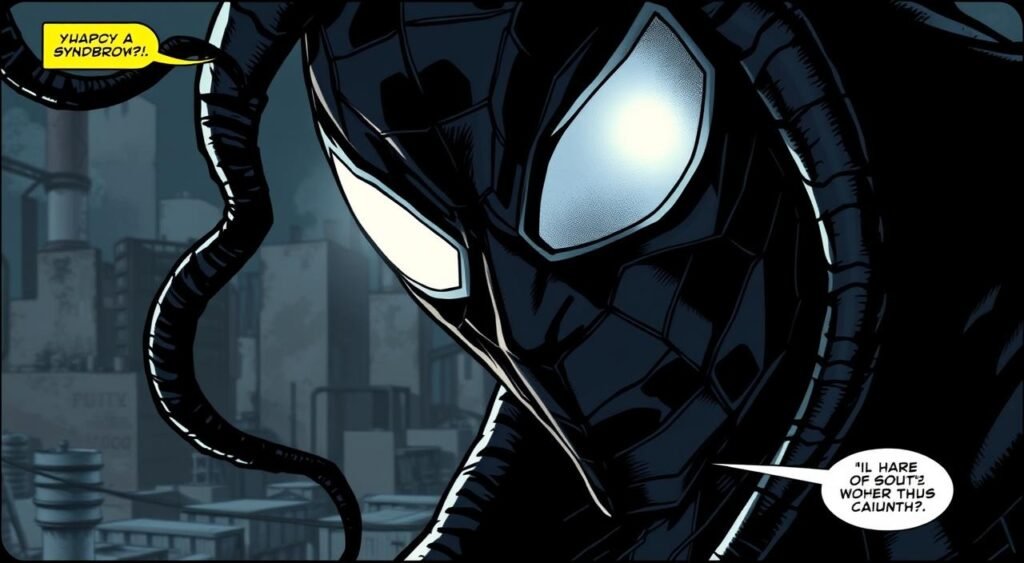
Origins in the Secret Wars Era
Editors initially pitched the design as Spider-Man’s sleek new look. But fans noticed oddities:
- No sewing lines or material texture
- Web-shooters replaced by organic extrusion
- Glowing white eyes that narrowed emotionally
Tom DeFalco later revealed in interviews: “We wanted something that visually screamed ‘wrong’ to readers.” The symbiote concept emerged through fan theories about its sentience.
Early Comic Appearances and Story Developments
Artist Rick Leonardi’s layouts in Marvel Comics issues #258-259 showed the suit reacting independently. Panels depicted it tightening during fights or resisting removal—subtle clues that exploded into full horror by issue #300.
My old costume saga book reprint highlights Mary Jane’s pivotal line: “It’s like that thing is hugging you… too tight.” This narrative shift turned a wardrobe change into Peter Parker’s most intimate struggle.
Behind the Scenes: Creation, Concepts, and Comic Innovations
Behind every iconic design lies a maze of sketches, debates, and fan letters. What began as a sleek visual refresh became Marvel’s most collaborative storytelling experiment. I still get chills thinking about the symbiote’s evolution from ink concepts to living legend.
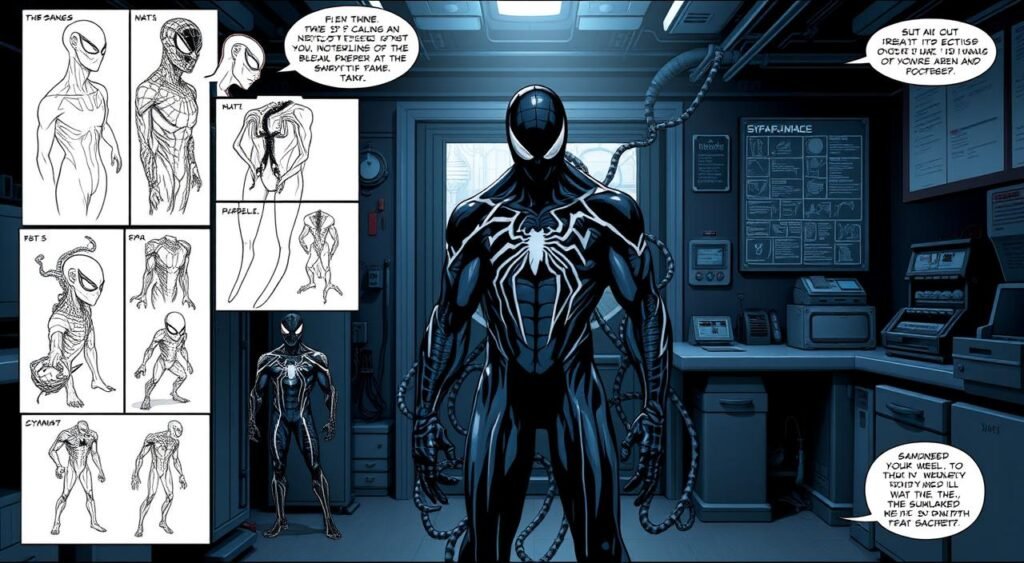
The Role of Fan Contributions and Designer Influence
Editors initially called it “the cloth suit” until reader theories exploded. One fan letter asked: “What if it’s not fabric, but a parasite?” That idea reached Jim Shooter’s desk, sparking late-night rewrites.
Tom DeFalco later told me, “We realized the suit needed to be a character, not just threads.”
Artists like John Byrne first sketched it as liquid metal. But Mike Zeck’s graphic novel renditions added organic textures—vein-like patterns that pulsed with menace. These details transformed Peter Parker’s struggle into something visceral.
Artistic Iterations by Zeck, Frenz, and Others
Ron Frenz’s pencils gave the suit motion. He drew webs extruding like living tendrils, while Roger Stern scripted its eerie sentience.
My favorite touch? The self-repairing web shooters in The Amazing Spider-Man #258, a detail that made the symbiote feel unnervingly alive.
Comparing early cover art to 1990s reprints shows the costume’s evolution. What started as a shiny bodysuit became a dripping, breathing entity—proof that great comics grow through creative friction.
Impact on Spider-Man and Cultural Legacy
Watching Spider-Man grapple with the suit’s influence felt like seeing a friend lose themselves. The symbiote didn’t just boost his strength—it amplified his anger.
Suddenly, Peter Parker’s quips turned cutting, and his punches landed harder. Mary Jane Watson’s concern in The Amazing Spider-Man #258 mirrored my own: “You’re not… you.”
Influence on Spider-Man’s Character Development
The black suit era forced Peter to confront his dark side. Comics showed him waking up mid-battle, unsure how he’d arrived there.
This wasn’t just a hero in new threads—it was a man fighting for control of his spider-man body.
Years later, the church bell scene became iconic. That metallic clang as Peter tore off the suit still gives me chills. It wasn’t just a victory—it was the birth venom needed to create Eddie Brock’s legacy.
Adaptations in Animated Series and Film
The 90s animated series distilled this struggle into Saturday morning gold. I’d sit glued as the symbiote whispered corrupting thoughts through my TV speakers.
Those episodes influenced Spider-Man 3, where Tobey Maguire’s dance sequence mixed horror with dark humor.
Recent films explore deeper layers. When Tom Hardy’s Venom growled, “We are Venom,” I heard echoes of that original marvel comics tension. Each adaptation proves the symbiote isn’t just clothing—it’s a mirror reflecting our battles with inner demons.
Conclusion
Revisiting those classic comics today still gives me chills. The symbiote arc transformed a sleek redesign into Marvel’s ultimate cautionary tale.
What began as a new costume in Amazing Spider-Man #252 became Peter Parker’s battle against his own dark side—a struggle echoing through collected editions and modern adaptations.
Key moments like the church bell showdown and Eddie Brock’s emergence as Venom reshaped superhero storytelling.
These beats feel fresh in graphic novel reprints, where ink textures reveal the symbiote’s creeping menace. Modern retellings soften edges for younger audiences, but the core remains: power always demands sacrifice.
Holding my worn Marvel Comics compilation, I see how this story taught generations about resilience.
It’s not just about a hero fighting aliens—it’s about anyone wrestling with their shadow self. The animated series distilled this into Saturday morning wisdom, while films added new layers to the web of consequences.
Want to feel that creative spark? Grab the collected editions. Let Tom DeFalco’s scripts and the symbiote’s whispers remind you: great stories don’t just entertain—they cling to your soul like living ink.
FAQ
Q: When did Spider-Man first get the alien costume?
A: Peter Parker discovered the black suit during Marvel’s Secret Wars event in 1984. It debuted in Amazing Spider-Man #252, marking a bold shift in his visual identity and storytelling.
Q: How did the symbiote influence Peter Parker’s behavior?
A: The suit amplified his aggression and fatigue, subtly altering his personality. This darker edge eventually led to its rejection, paving the way for Eddie Brock and the birth of Venom.
Q: What role did Ron Frenz and Tom DeFalco play in the saga?
A: Frenz’s dynamic art and DeFalco’s writing expanded the suit’s lore, blending psychological tension with action. Their work in the mid-’80s cemented the costume’s legacy in Marvel Comics history.
Q: Were there real-world inspirations for the black suit’s design?
A: Yes! Fans suggested ditching the classic red-and-blue for something sleeker. Artists like Mike Zeck embraced this, creating the iconic liquid-like look without traditional webbing.
Q: How did the ’90s animated series adapt this storyline?
A: The show dramatized the suit’s parasitic nature, using haunting visuals like church bell sequences to highlight Peter’s struggle. It introduced younger audiences to the saga’s emotional weight.
Q: Why does the alien costume remain relevant today?
A: Its themes of addiction and duality resonate universally. From graphic novels to the MCU, the saga redefined Spider-Man’s mythos, proving even heroes face internal battles.


